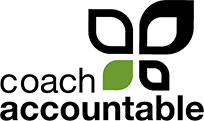So good, robots don’t believe what humans say about it
Ah, the reviews game, amiright? That nigh on essential part of a business’s presence online.
This is a tale of our begrudging participation therein.
The reviews we already have around the internet make it clear: CA is well loved by its customers (I won’t link to any in particular here because I don’t wish to feed the machine, but you can find ’em easily enough).
We’ve never hustled much for reviews. We once sent out an email to a bunch of our customers at the behest of one of the reviews sites (“We’ll give ’em a $10 gift card for filling one out!” they offered… eh, okay, I guess), but beyond that they’ve just organically trickled in over the years with no real prompting on our part.
Then, for better or worse, as a marketing experiment we signed on with TrustPilot. Became a paying customer and everything with a year long contract for… whatever value doing so is supposed to provide.
We dipped our toes into working with them, but during the first 2 months only ever got around to inviting 3 folks to leave us a review (you could say the endeavor was not managed with vigor). Anyway, one of those invitees did, and they left us a lovely 5 star missive. Which is pretty good!
The rub is that, by some curious math, a single 5-star gives you a 3.7 average.
Here’s what it looked like then when you searched “coachaccountable reviews” with Duck Duck Go:

See that second hit? That’s the one I’m talking about.
Ouch.
I didn’t want to bother with this any further. Trustpilot told me “there is no way to hide your page as Trustpilot is a public facing platform”, which is odd, because I’m pretty sure we didn’t have that page out there before becoming their customer.
So there we were, ostensibly committed.
So I asked the CoachAccountable users group for a favor.
I told them 3.7 isn’t consistent with the vibe we generally get. So it would mean a lot to us for them to take a little time to leave a review about what their experience has been like with CoachAccountable on our Trustpilot page.
And they did! Within 48 hours we had 36 reviews, overwhelmingly glowing and, as one observed, “they read like love letters”.
So there we had it, problem solved: the notion that CA was a “3.7 star platform” was no longer hanging out on the internet.
Then a funny thing happened a few days later…

Uh oh.
Here was a bunch of people, all of them quite real and genuine customers (there are receipts, yo’), moved to share their experiences based on a simple request. And then this supposed arbiter of truth and authenticity within the reviews game emailed about half of them, subject line “[reviewerName], your review has been removed”, citing “our software has flagged your review for having unusual features”.
Sigh.
Then they didn’t make it easy for my customers to prove the legitimacy of their reviews:

Evidence that was sufficient for some was insufficient for others. So much for objectivity.
I had my mounting dissatisfaction with TrustPilot amid the circumstances I described above, but making my customers jump through hoops so that their earnest missives remain published was so deeply distasteful to me on many levels.
My deep appreciation went out to those that replied back, supplying evidence of the legitimacy of their review in order to get it reinstated. And to those who thumbed their nose at the robot-initiated insinuation otherwise? They have my emphatic understanding and support.
So what of it? Let’s look now to the cheeky silver lining.
If the algorithmic flagging of so many of the community’s generous reviews drives me nuts (and it does), there’s one thing about it that I take serious heart from, and that is this:
The community’s assessment of CoachAccountable is hardly to be believed.
I take great pride in the fact that how they described the platform and their experiences with it (and with us) were SO outside the bell curve that they triggered sophisticated machine learning models to scream “Gah, that can’t be right! Flag it! Shut it down!”
A marketing tagline comes to mind:
CoachAccountable: so good, robots don’t believe what humans say about it.
I’m not saying I’m gonna change the homepage to weave that one in, but I figure it is, at very least, a tale worth telling.
And if TrustPilot doesn’t want those reviews, well then I’m taking ’em back.

 The impetus for this instance of delightful collaboration came as a simple question.
The impetus for this instance of delightful collaboration came as a simple question. This one comes from Michiel Bosman of
This one comes from Michiel Bosman of 
